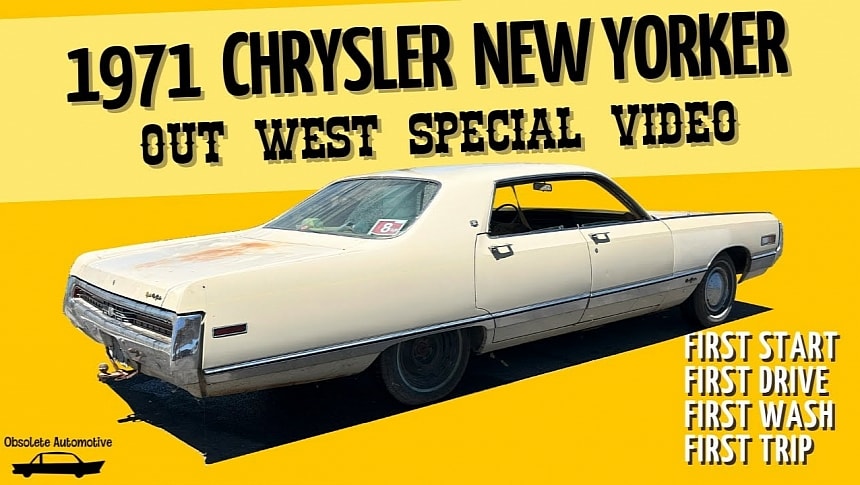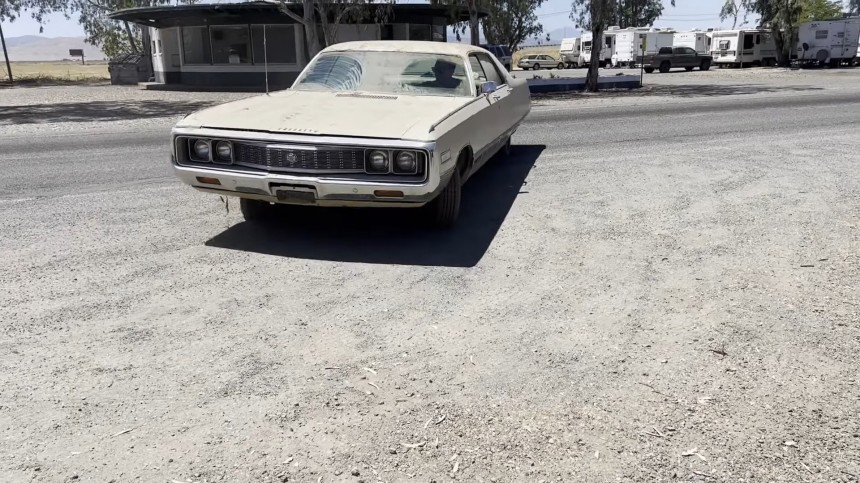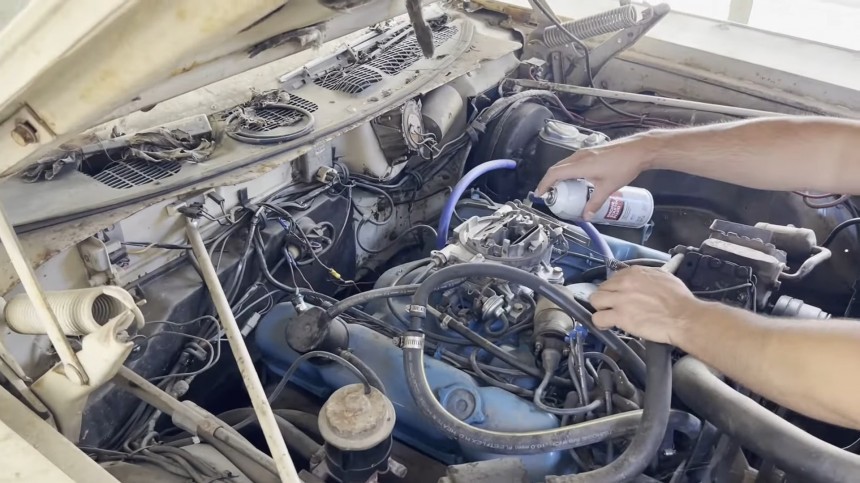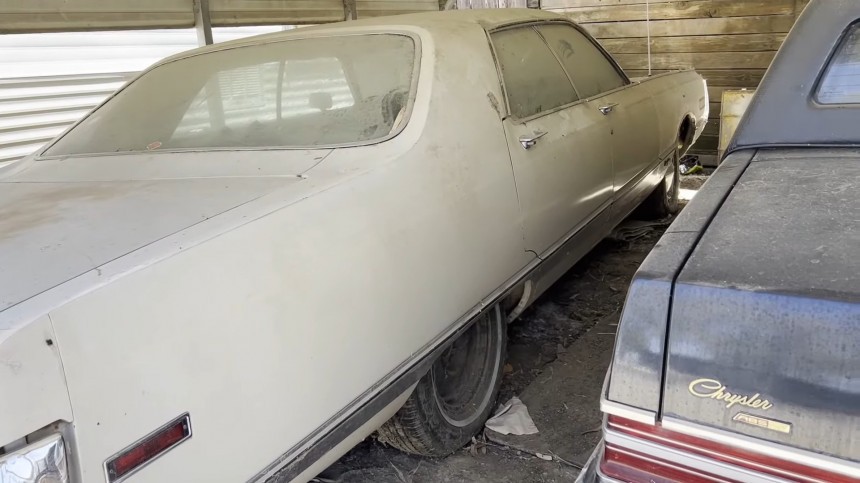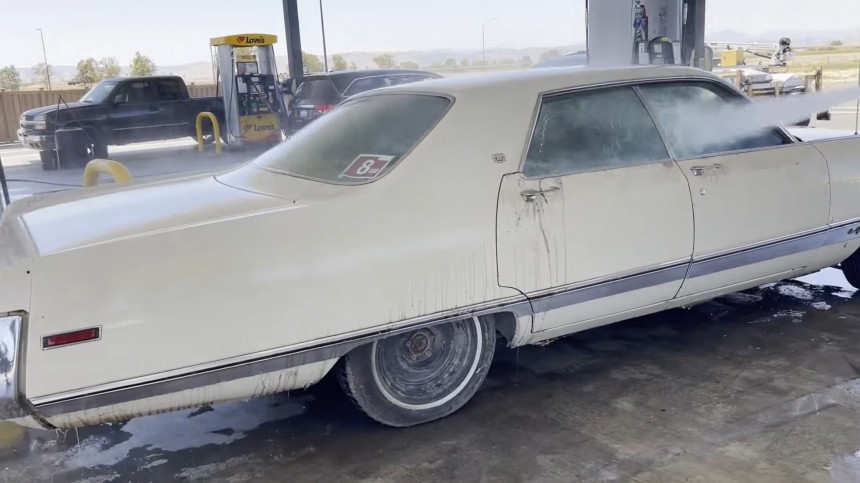The New Yorker is among the longest-running nameplates in the Chrysler record books. It appeared first on the automobile stage in 1938. It was retired in 1996, making it the longest-lasting American moniker to that point. In the late sixties and early seventies, Chrysler was going through (yet another) existential crisis—not the Corporation as a whole but the eponymous automobile brand.
Despite the newly introduced fuselage styling, sales were dwindling rapidly, blowing away the enthusiasm of the early sixties when the division shot straight up. From a little over 77,000 units in 1960, Chrysler’s sales more than tripled by 1966 (almost 265,000).
Then something happened: in ’68 and ’69, sales settled in the 260,000-unit range, but 1970 brought a tidal wave, with a net loss of some 80,000 examples. In 1971, the drop continued to 175,118 cars. Again, this is just Chrysler’s division (counter)performance from its five-model lineup.
From top to bottom, the Imperial was the all-out luxury car that rivaled Cadillacs and Lincolns (in theory), followed by the New Yorker, the Town&Country Wagon, Three Hundred, and concluded with the Newport (Custom and base).
Here's where the statistics get intriguing: out of those 175,000-odd automobiles assembled for the 1971 model year, the high-end New Yorker was among the best-selling models. 34,968 examples rolled off the production lines, spread erratically among three body styles: two- and four-door hardtops and a four-door sedan.
The former was the bronze medalist on the sales podium of the moniker, with a mere 4,500 automobiles. The lion’s share went to the pillarless four-door land yacht (20,633 units), and the remaining 9,850 were four-door sedans – quite a massive gap between each body style.
By comparison, the most common Chrysler of that year was the low-key Newport more-door sedan, with its charts-topping 24,834 automobiles. The New Yorker outdid itself, and the nameplate would have probably enjoyed the favors of fortune today had it not been for one Achille’s heel: the engine.
The standard motor in a Chrysler (of any kind) would have been a big-block V8—either the venerable 383 cubic-inch (6.3 liters) or the 440-cube dinosaur (7.2 liters). In the Imperial, New Yorker, and Three Hundred, the 440 was the only plant offered in a 335 gross hp setup or with a 370-hp alternative (the famous TNT—but this was not installed in Imperials).
The difference between the two eight-pot bangers resided in the compression ratio (8.8 versus 9.5) and the exhaust (the more powerful variant had dual pipes for better flow). Unfortunately, many of the cars that originally sported these behemoths are long gone, having been savagely ripped apart precisely for their V8 hearts, then sent to the smelter without further ceremony.
Despite their relatively moderate production numbers, New Yorkers aren’t that common nowadays, particularly in their original condition. Occasionally, one pops its head above the water, like the following example that’s been sitting in Williams, California, for more than half its life.
Built in August 1970 and parked sometime in 1996, the Chrysler luxo-barge spent the following 28 years waiting for mechanical repairs. Ultimately, a mechanic performed the necessary servicing, only to discover the owner didn’t want to pay for the work. Consequently, the car remained at the shop until Austin Swanger, the host of the Obsolete Automotive YouTube channel, bought it and put it back on the road.
This isn’t the usual ‘Will it start, run, and drive after sitting for decades?’ type of video but more of an ‘I bought it as-is, I’m driving it as-is’ feature. The car is mechanically sound(ish), given that it has a replacement motor (a correct 440 V8) and assorted gearbox in it. The previous owner, who had it fixed and then didn’t cough up the money, provided the drivetrain to the mechanic.
This particular car has several features that make it a rarity even among its breed; first and foremost, it has a plain top (no vinyl), which was out of the ordinary for a luxury Chrysler in 1971. Then it boasts the two most expensive options a New Yorker could be fitted with from the factory: the ‘Make Cool Even Cooler’ and the entertainment systems. In plain civilian parlance, the air conditioning and the radio.
The climate control unit was a hefty $426 in 1971 (it could go up to $501 with Automatic Temperature Control), and the sound system (AM radio) was another $133. The interior is in really nice condition –the exact one that the sales literature depicted, as a matter of fact – but the electric windows don’t open and close properly. The California dust found its way inside the door and probably jammed the power-operated regulator.
The replacement three-speed Torque flite automatic tranny is limping a bit (and its seals aren’t earning their wages in full, as the transmission fluid is dripping at an alarming rate). The original box is still in the trunk, with the original radiator and many other parts. Still, this car is a solid classic with much potential for restoration.
When Austin bought the car, the odometer – inactive since 1996 – showed 73,405 miles (118,134 km) covered in 25 years, giving an average of less than 3,000 miles (4,800 km) a year. Not exactly a daily driver, which would explain its condition (together with California's dry, metal-friendly climate).
Then something happened: in ’68 and ’69, sales settled in the 260,000-unit range, but 1970 brought a tidal wave, with a net loss of some 80,000 examples. In 1971, the drop continued to 175,118 cars. Again, this is just Chrysler’s division (counter)performance from its five-model lineup.
From top to bottom, the Imperial was the all-out luxury car that rivaled Cadillacs and Lincolns (in theory), followed by the New Yorker, the Town&Country Wagon, Three Hundred, and concluded with the Newport (Custom and base).
The former was the bronze medalist on the sales podium of the moniker, with a mere 4,500 automobiles. The lion’s share went to the pillarless four-door land yacht (20,633 units), and the remaining 9,850 were four-door sedans – quite a massive gap between each body style.
By comparison, the most common Chrysler of that year was the low-key Newport more-door sedan, with its charts-topping 24,834 automobiles. The New Yorker outdid itself, and the nameplate would have probably enjoyed the favors of fortune today had it not been for one Achille’s heel: the engine.
The difference between the two eight-pot bangers resided in the compression ratio (8.8 versus 9.5) and the exhaust (the more powerful variant had dual pipes for better flow). Unfortunately, many of the cars that originally sported these behemoths are long gone, having been savagely ripped apart precisely for their V8 hearts, then sent to the smelter without further ceremony.
Despite their relatively moderate production numbers, New Yorkers aren’t that common nowadays, particularly in their original condition. Occasionally, one pops its head above the water, like the following example that’s been sitting in Williams, California, for more than half its life.
This isn’t the usual ‘Will it start, run, and drive after sitting for decades?’ type of video but more of an ‘I bought it as-is, I’m driving it as-is’ feature. The car is mechanically sound(ish), given that it has a replacement motor (a correct 440 V8) and assorted gearbox in it. The previous owner, who had it fixed and then didn’t cough up the money, provided the drivetrain to the mechanic.
This particular car has several features that make it a rarity even among its breed; first and foremost, it has a plain top (no vinyl), which was out of the ordinary for a luxury Chrysler in 1971. Then it boasts the two most expensive options a New Yorker could be fitted with from the factory: the ‘Make Cool Even Cooler’ and the entertainment systems. In plain civilian parlance, the air conditioning and the radio.
The replacement three-speed Torque flite automatic tranny is limping a bit (and its seals aren’t earning their wages in full, as the transmission fluid is dripping at an alarming rate). The original box is still in the trunk, with the original radiator and many other parts. Still, this car is a solid classic with much potential for restoration.
When Austin bought the car, the odometer – inactive since 1996 – showed 73,405 miles (118,134 km) covered in 25 years, giving an average of less than 3,000 miles (4,800 km) a year. Not exactly a daily driver, which would explain its condition (together with California's dry, metal-friendly climate).
